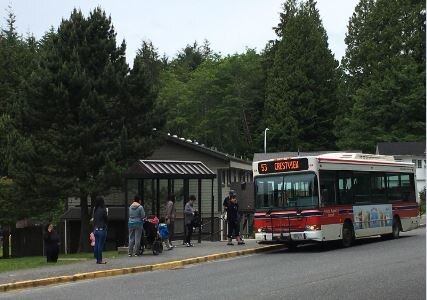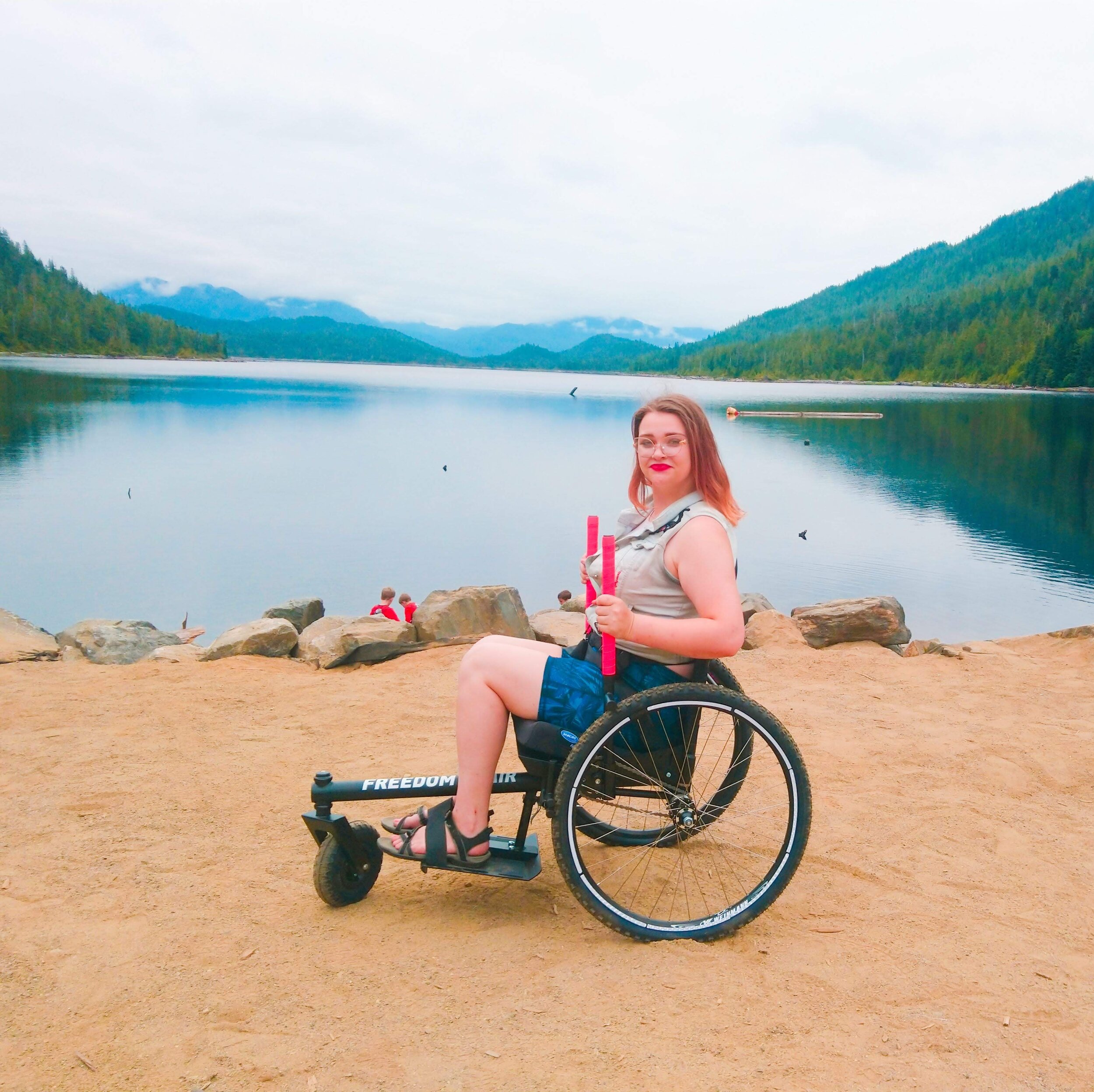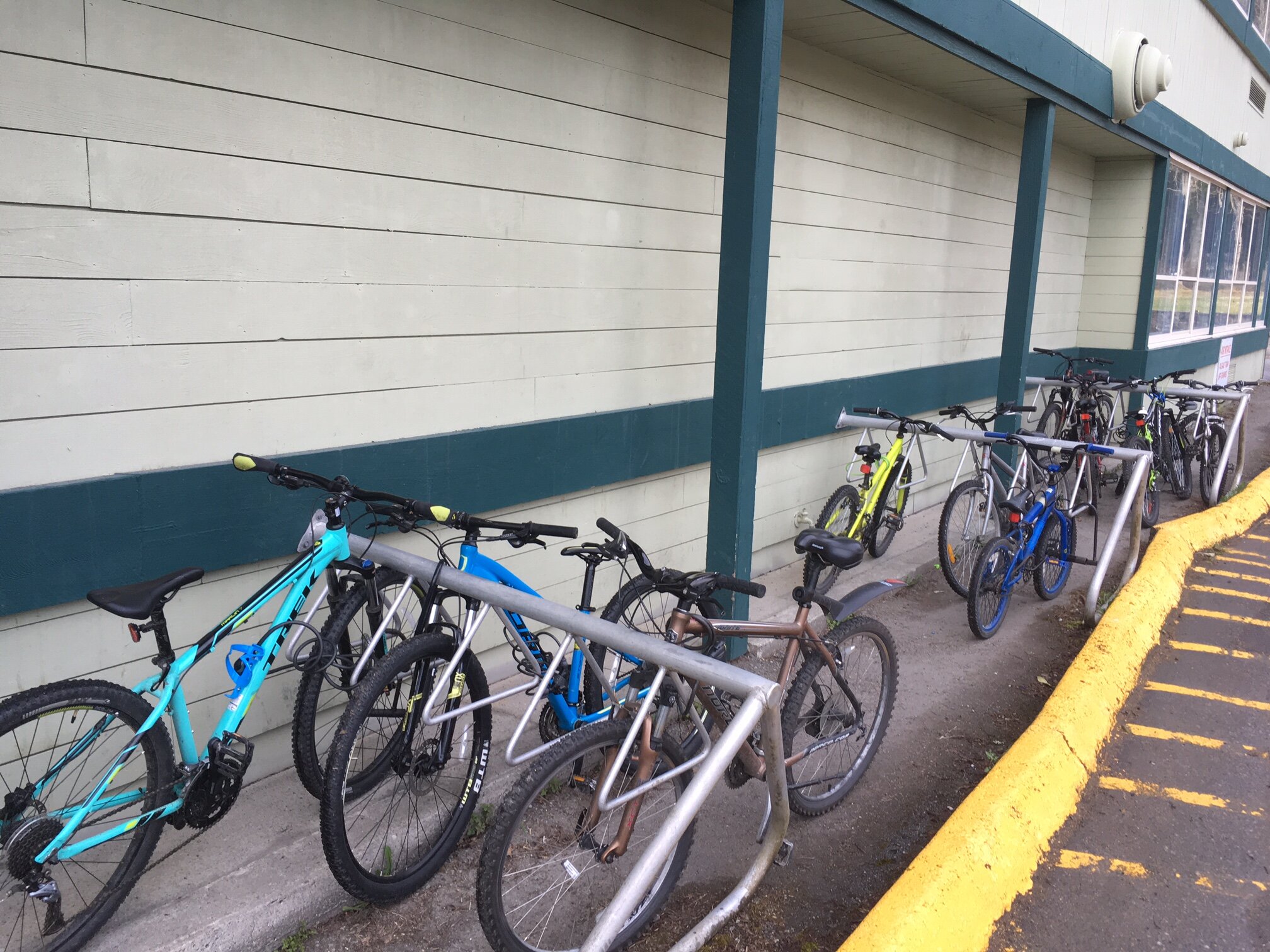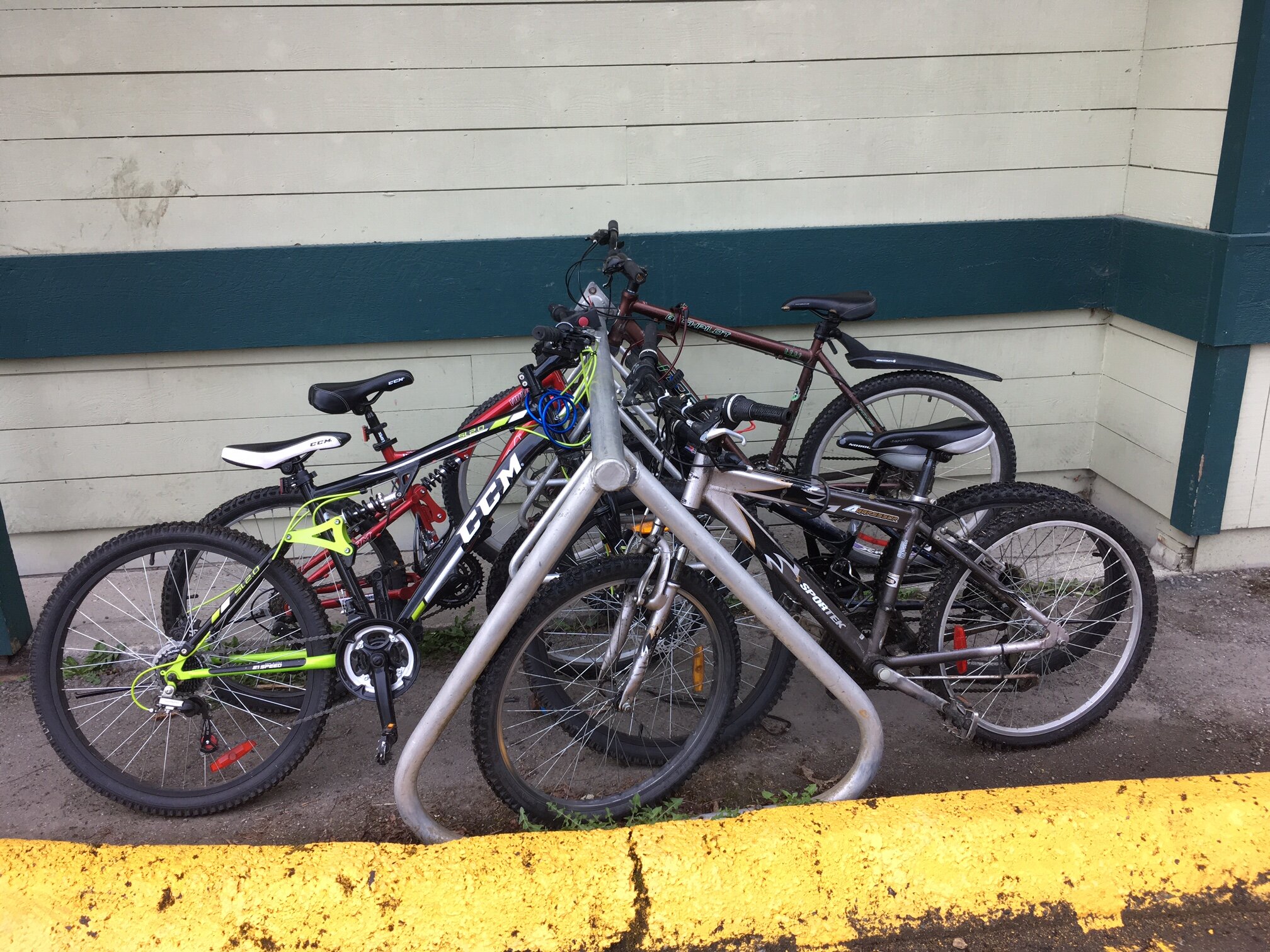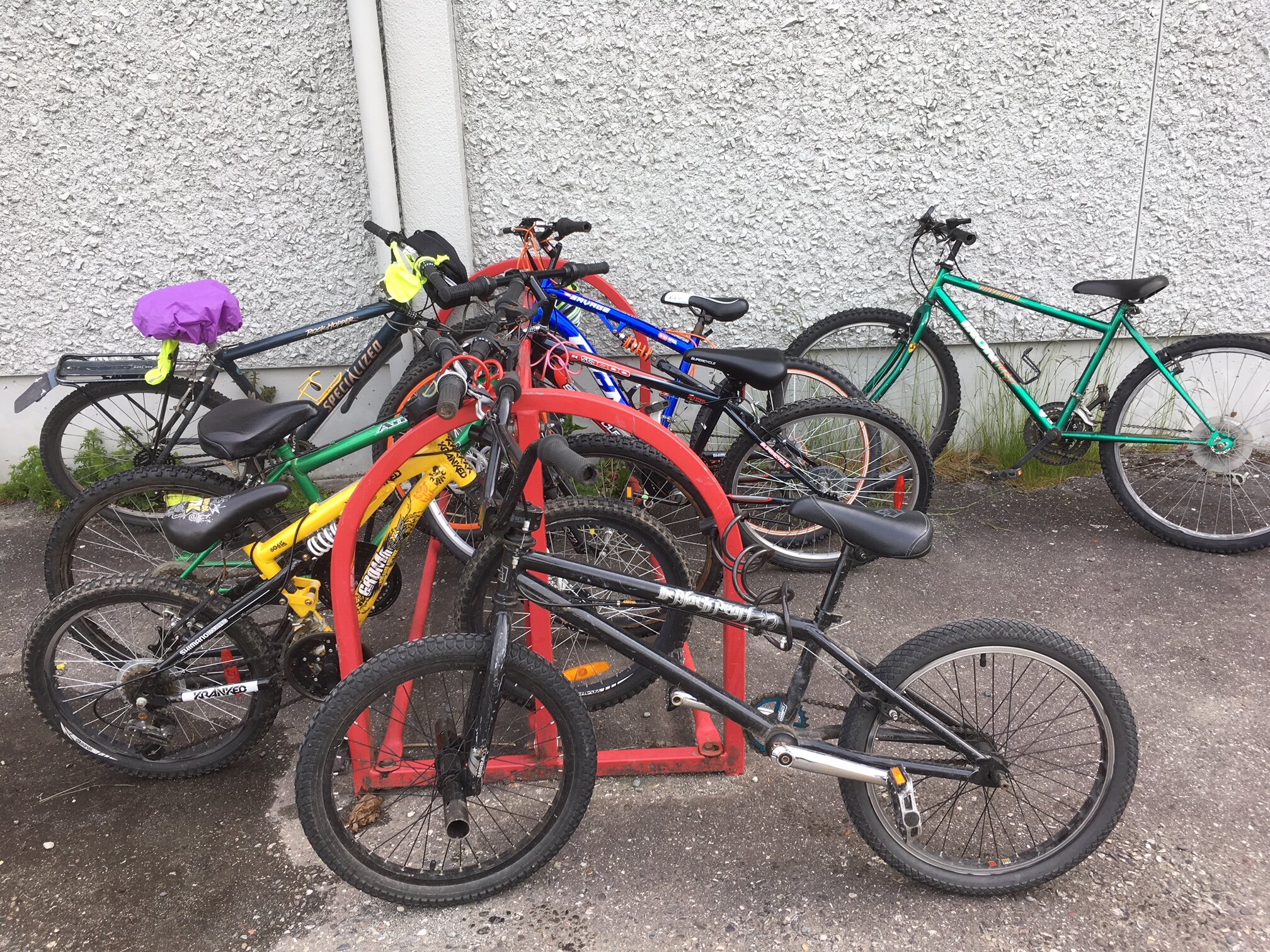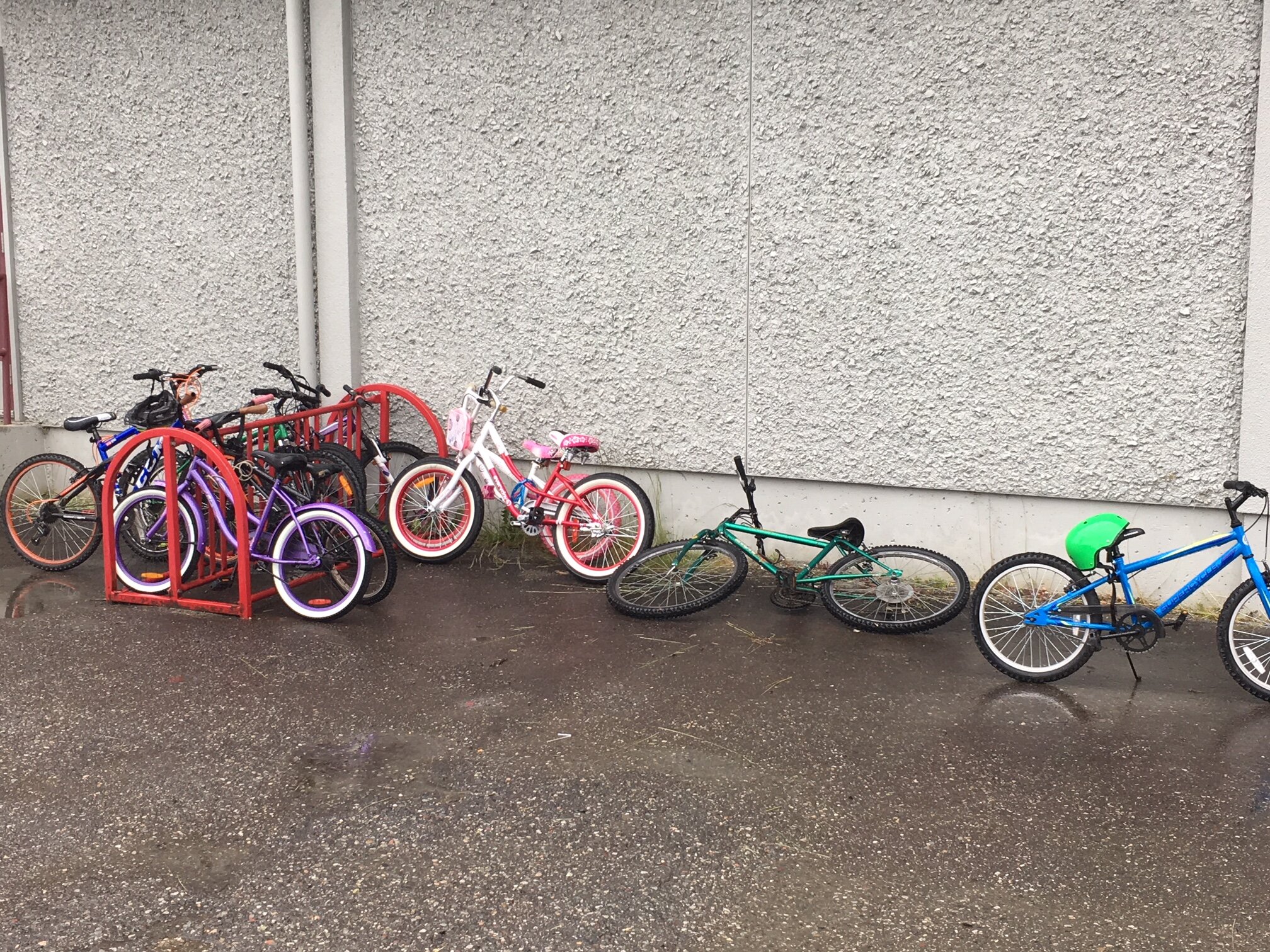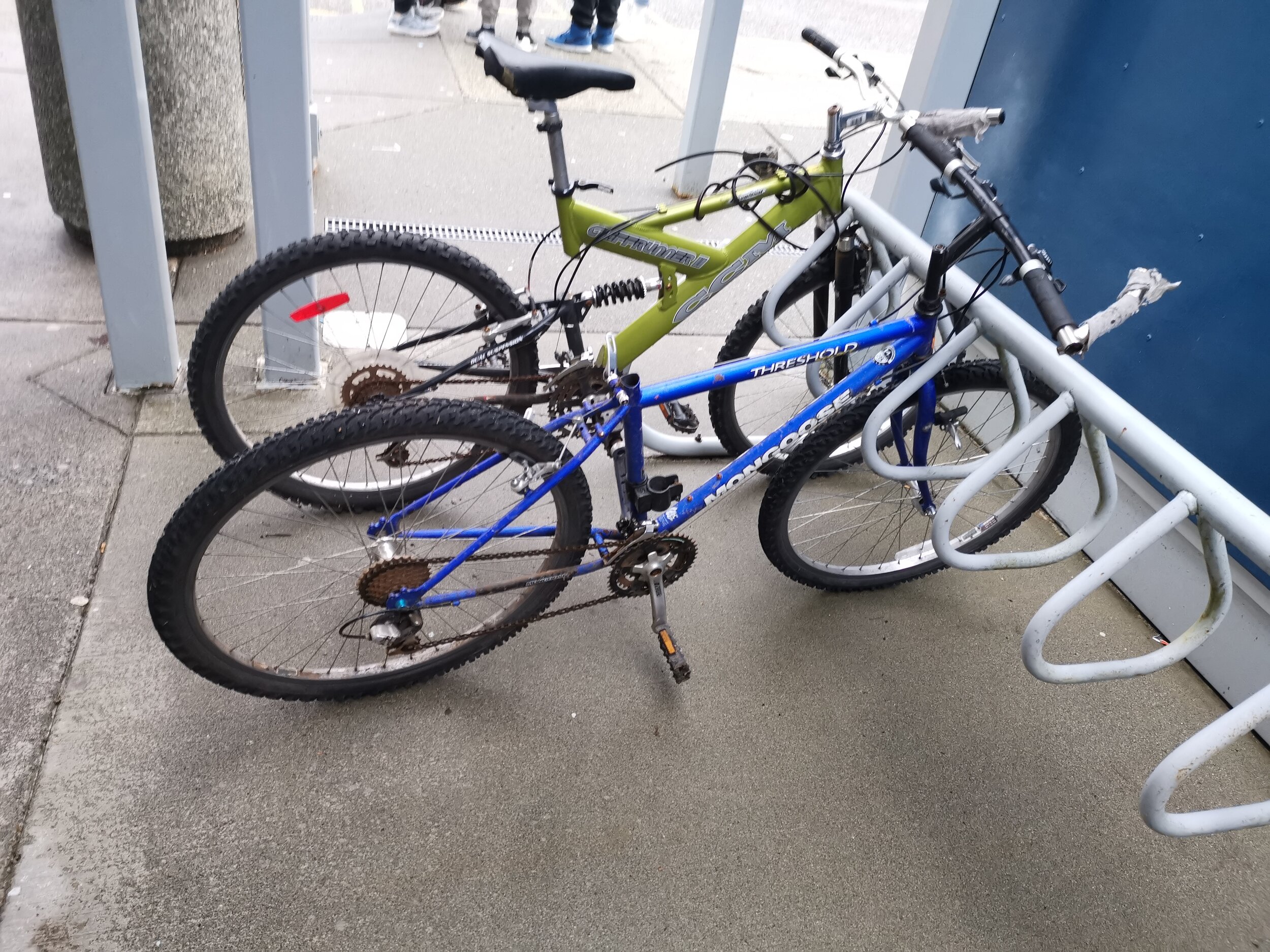In January, Complete Streets for Prince Rupert’s Chris Lightfoot and North Coast Mountain Biking Association’s (NCMBA) Trevor Sowers had the opportunity to interview Tyler Wilkes and Aleksa Havalaar of the Terrace Off-Road Cycling Association (TORCA). Tyler is TORCA President and Aleksa is TORCA Vice-President & Trails Manager.
One might wonder, ‘Why would Complete Streets for Prince Rupert be interested in the goings on of an off-road cycling association in Terrace?’
I think a big part of it comes down to infrastructure. People in Terrace asked for more accessible trails and TORCA delivered tracks and trails suitable for three-year-olds on balance bikes and expert mountain bikers alike. Installing family-friendly trails emanating from the heart of Terrace, combined with the timing of Covid-19, resulted in an explosion in the number of trail users over the summer of 2020 - not only mountain bikers, but also walkers and runners. With more multi-purpose and wheelchair/adapted cycling trails in the works, TORCA is helping to lay down paths that allow people to access a wider area of the community without necessarily needing an automobile. These paths are also helping people feel more connected to their community. We hope TORCA’s example will inspire a greater interest in on- and off-road trails for people of all-ages and abilities in Prince Rupert and beyond.
(This conversation has been edited for length and clarity.)
CS4PR: Would you mind telling us a little bit about TORCA for those who have not learned about you already?
Tyler: TORCA is the Terrace Off Road Cycling Association. It started off 20 years ago as a little group that has grown to what it is today. When I moved here in 2013, I could barely find TORCA. It was just a couple people meeting in their basement a couple times a year. But today we have over 400 members. We're a not-for-profit advocacy group interested primarily in mountain biking in Terrace and working with other community groups and other causes associated with that. We build and maintain trails. We advocate for trails. And we promote cycling in the community.
CS4PR: What kind of challenges have you faced developing and promoting trails and cycling in Terrace and how have you overcome some of those challenges?
Aleksa: When I first moved to Terrace, the first thing I noticed was that the trails here were really hard and there was really nowhere for beginners to learn. I have over 20 years of riding experience under my belt so I really enjoyed the challenge, but I could also see how the trails here would discourage people who were new to riding. So one of the big things we did in 2017 was that we surveyed our membership to figure out what our membership was looking for, and what they needed, and what gaps we needed to fill. Overwhelmingly, people were looking for some easier trails, some flowier trails, some less technical trails, and they wanted more accessibility. Our number one challenge was dealing with the terrain that we have. I think that was probably the biggest challenge - just figuring out where we are going to build those easier trails.
Another big challenge is the amount of time it takes to have trails approved or to have an idea move forward. Trail development and trail approval can take 12 months or it can take 10 years or anywhere in between. There'll be volunteers who are trying to drive this movement from the ground up, and then you're working with land managers who are often working for government agencies. 99 percent of our trails are on Crown land so we work with one Recreation Officer who also deals with snowshoers, snowmobile clubs, ATV clubs, backcountry ski clubs, back country horsemen, and all of these associations are asking this person for something. These Rec Officers, or other land management officials, end up with stacks of paper on their desk that are applications for trails. Challenge number two is really just getting approval.
Challenge number three - I think Covid really highlighted this - is just keeping up with the pace of mountain biking expansion. The sport grew 30 percent in one year and probably would have grown more except that bike shops were completely sold out! Inventory was depleted not only for bikes but for components.
Another huge challenge for us is that we have a whole bunch of riders on a very small network and there's no way that we can keep pace with the number of new people who are on the trails. New people are moving to the area, new tourists are coming through because the highway 16 corridor has kind of exploded and everybody's hearing about the trails. These aren't bad problems, and they're not really problems. I think that there is an understanding from at least the Rec Sites and Trails people that mountain biking is a very desired activity. It's something that brings people to communities and it gives them a reason to stay.
All of these things that I highlighted as challenges are actually benefits when you're putting together a grant application. Trails are tourist attractions. Building trails is good for employee attraction and retention. Building trails is good from a health and mental wellness perspective. Building trails is a way to build community. There're so many benefits. It's really not tough to make that argument anymore, which has been a really big change in the last 20 years. Mountain bikers used to have to fight for a trail. Now it's really just about how do we maintain what we have, and then how do we fill in all these gaps to make it accessible for riders of different abilities and different ages and different levels. So that's kind of where we're at now - figuring out how to make it accessible and more widely available.
CS4PR: Could you go over some of the successes you've experienced in the last couple years?
Tyler: We've had some pretty major successes in the past few years, which is the reason we still do this in all our spare time. There were two big projects in 2017 - Hey Bear and Shangri-La. Those filled two major gaps. It gave us a new advanced trail that had flow and also the first beginner trail we ever had - something a six-year-old can ride. I think that project being such a success got us a new level of recognition and appreciation in the community, not just from community members, but also from local government. Almost anybody we talk to now knows TORCA. They know what we're capable of, and it's not a stretch for us to say we're going to do something to the next level. There's belief and support for [developing trails] and it makes it a bit easier now.
CS4PR: At your AGM in 2020, you mentioned topics such as sustainability, Active Transportation, and mobility for all ages and abilities. This speaks to a lot of concepts we're interested in at Complete Streets for Prince Rupert. Could you please tell us about the relevance of these concepts to TORCA?
Tyler: Our direct goal is mountain bike advocacy and recreation, but we're definitely considering how we get to that recreation. Terrace is not a big place and you really shouldn't need to load your truck up to go mountain biking. Part of the problem was that our existing trailhead was located quite a ways out of town. Our recent project, however, created a new connection right in the heart of Terrace at the Rec Centre. Now nobody who lives in the lower horseshoe has an excuse to need to drive there. It takes two minutes of flat pedaling to get there. We also created a new connection to Birch Bench. You couldn't walk from your house there to town until we built a trail. To be honest, [the pedestrian connection] wasn't our intended purpose for the trail, but it's an excellent byproduct of it. So we're conscious of that sort of footprint in the community.
Also in terms of accessibility, there are adaptive mountain bike trails that can be built and designed which are intended for alternative bike methodologies like three-wheeled and four-wheeled bikes. There's all sorts of technology people with different abilities can use to get on the trails. We don't have that ability right now, but it's on our radar.
[In terms of the urban environment] Terrace is finishing the Grand Trunk Pathway to the Kitchen Bridge this summer. Right now it ends by Skeena Sawmills and just dead ends. So the last 1.7 kilometers is getting built which will connect to Kitsumkalum. There are many people who don't have vehicles and need to go to town. People walk on the shoulder of highway 16. It'll be a separated pathway so those people have a safer way to get to downtown.
CS4PR: Could you tell us about what TORCA is planning over the next five years?
Aleksa: The data from our 2017 survey informed a five-year strategy for us. Part of that strategy is creating more accessible trails, creating more beginner trails while still trying to fulfill the needs of the more advanced riders who would like some new, interesting features, and also maintaining the trails that we currently have. Part of the plan was also to develop one of the alpine riding areas just outside of town - Maroon Mountain. That's now formally part of our partnership agreement with Rec Sites and Trails BC. We're also looking at where we can put in adaptive trails so we can increase our accessibility even more.
There's also a young man who just moved to town not that long ago who's really interested in putting together a youth trail building crew. He's wanting to hire some kids who may not have other opportunities for employment to do a summer program so we're helping him apply for some grants.
Another part of our plan is more engagement with our First Nations governments locally. For us, First Nations consultation is one thing we can improve on - more consultation, more engagement, more conversations and figuring out how we can work together.
NCMBA: What is the best way to engage members to ensure maximum turnout at events and volunteer trail nights?
Aleksa: We try to be really collaborative and really positive. We basically just try to keep it light. Keep it social. On our trail nights, I think 90 percent of the people come out so they can just like shoot the breeze. It's making sure that everybody knows that you don't need to have any prior trail building experience. You can just come and pick up a rake. You can pick up a bucket and throw some rocks into it. You can just kind of stand around and look busy and it doesn't really matter.
I don't know that there's a formula for maximum engagement. I started Dirt Club three or four years ago and three of my friends came out. It wasn't a huge success right away, but I did it every Tuesday. It didn't matter what the weather was, unless it was pouring sideways like Prince Rupert type rain. We'd always have pretty clear communications about what we were doing and just making sure that people felt like they were welcome. There's nothing worse than walking up to a group of bros, and they all know each other, and they're part of this little clique, and if you're new to the group it's really really hard to break in. I think our big thing is really just making people feel welcome. Obviously, the more family-friendly something is, the better, too.
NCMBA: What would you say is the most challenging part of building a new trail?
Tyler: I think it depends on where you are. The terrain can deal you some surprises. The process is the hard part. There's no road map to go from, “Hey, I want to go mountain biking in my backyard!" to actually going mountain biking in your backyard and doing it by the book. I think the hard part is the front end work. What line managers and funders want to see is that you have the ability to manage the project, and you have the ability to maintain this asset that’s on public land. Putting that together is a big challenge.
NCMBA: What is one piece of advice you would give a new mountain bike association for success?
Tyler and Aleksa: Plan ahead!
Aleksa: The shoveling is the glamorous part, but putting the time in on the front end to lay the groundwork with the land managers and the partners to make the thing come to life is crucial. It’s important to get all the stakeholders together and plan for the long term big picture.
Tyler: I think Valemount, BC is one of the best recent examples of this. They put the pieces together in a plan. They started one project, then a second project, and before you know it, they built out their entire plan and it only took five years. Because the groundwork's there, you could be building one project and applying for grants for the next one, and you don't need to worry about consulting 8,000 people again. So it's worth the effort to plan well from the start.
One other piece of advice is just work with what you have. Rupert has a certain climate and terrain which will dictate your trails. Build with what you have and take advantage of the best of what you have and you're gonna have something unique and awesome.







